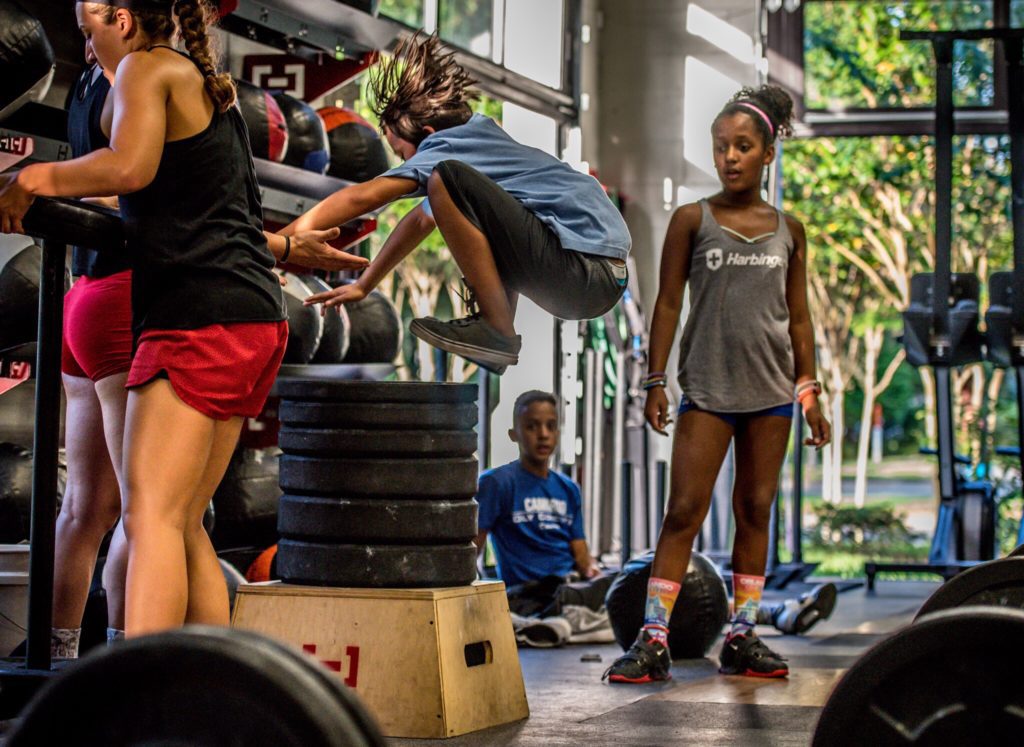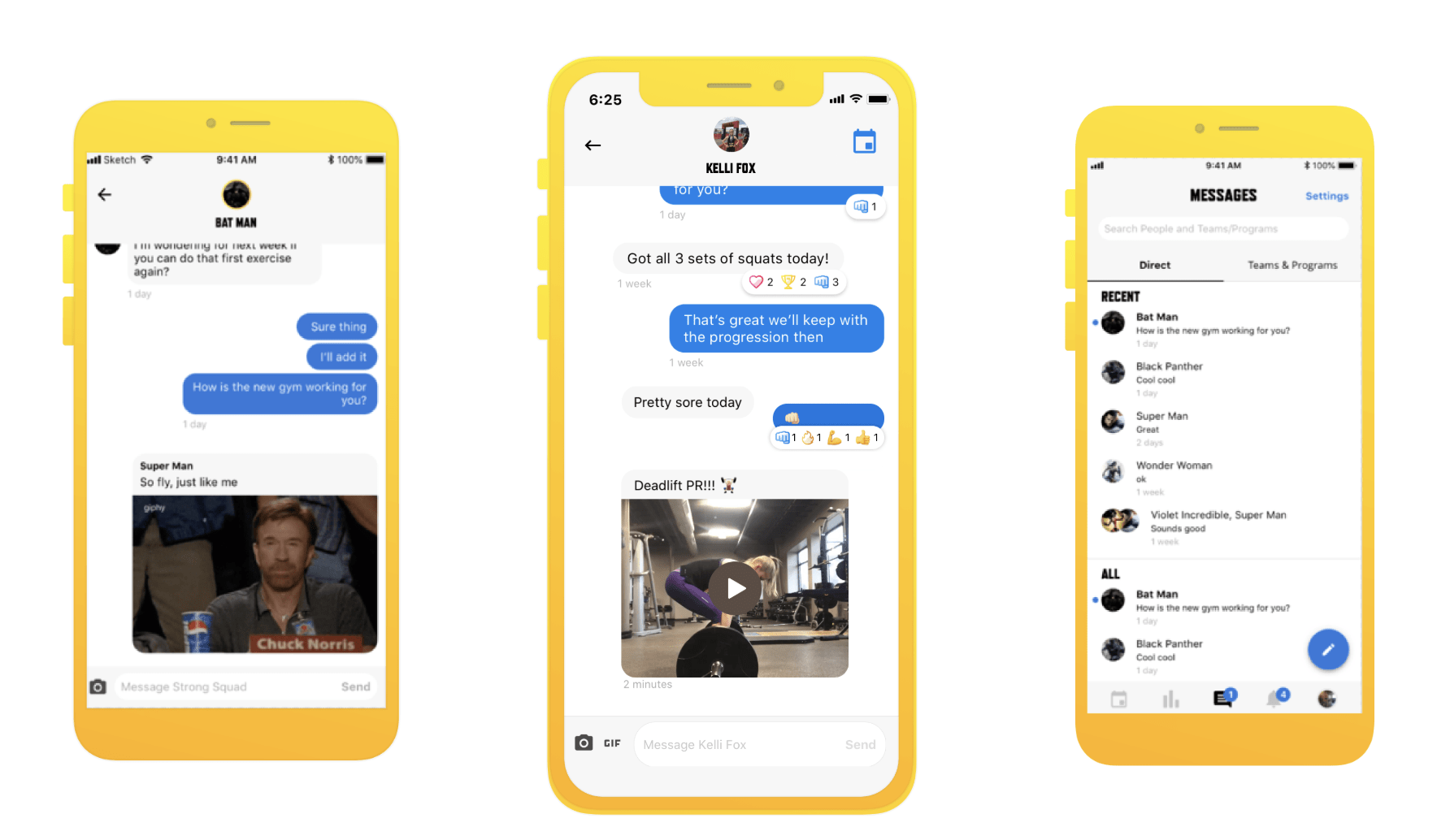How to Power Train from Home
Strength & ConditioningIf you’re able to get to a fully kitted-out gym, it might be easy for you to develop power.
But for many people, training at home has become a new normal and as retailers continue to sell out of equipment faster than they can restock it, you could be struggling to work on this crucial physical quality.
This article will give you some helpful pointers on how to add power training back into your routine.
Jesse Grund
Jesse Grund’s passion is simple: coach men and women to their optimum physical potential and to places they never expected they could take their body. He is the proud owner of Unconventional Strength, an elite personal training studio in Orlando, FL where he and his fellow coaches train everyone from post-rehabilitation clients to world champion athletes. Learn more at https://unconstrength.com/.
// Strength training vs power training
While there are several ways that we could define power from a biomechanical standpoint, it’s essentially a case of the amount of force you can generate and the velocity at which you do so.
Power is an element of strength, in that you need to be strong in order to be powerful (as a certain kettlebell training system puts it, you need to be strong first).
The two go hand in hand, and if you’re strength training, at least some of your time should be dedicated to developing power.

// Two ways to express power
The first is to move explosively, as you would while driving to the rim for a layup, running a route to catch a football (I’m partial to this one as I’m also coaching high school football right now), or just showing off to your kids that you can leap up and touch a high tree branch.
Or you might generate sufficient force to move a heavy object, whether that’s deadlifting a barbell or grappling with that big Amazon package that UPS just dropped off on your porch.
Typically we only think of power in terms of explosiveness, but there’s a reason that the term “powerlifting” exists: even if you’re lifting, pushing, or pulling a heavy object slowly, you’re still recruiting as many muscle fibers as possible as fast as you can to overcome inertia and gravity and get it moving.
If you were to replicate the hip hinge needed to do a deadlift or pick up a box and remove the load, you’d find you were moving much faster, such as you would to jump as far or high as possible in a broad or vertical jump.
From a practical, everyday perspective, power extends far beyond the weight room, gym, or studio (and, perhaps in your current situation, that little training area in your basement or garage).
Whether you’re sprinting to catch a bus, reacting quickly to fix your footwork as you begin to fall off a curb, or catching a toddler before they topple over, you’re applying power. This is why I feel that it’s essential that you train power in some way.
The more powerful you become, the less likely you are to put yourself in harm’s way, and the more capable you’ll be to handle whatever challenges life throws your way.
// training for power at home
In a gym setting, we often see power demonstrated in lifting heavy loads and plyometrics, but when it comes to power training at home, things get a little tricky because of the equipment limitations.
jump to it
The good news is that even if you have no equipment at all, you can still develop power to some extent.
The temptation in a gym or studio setting is to only move powerfully up and down or forward and backward, but in real life our movement patterns need to be broader and more diverse.
If you start doing some jumping-based power training from home, you should explore full ranges of motion and break through such self-imposed movement limitations to explore a full 360 degrees during your exercises.
Land softly

Before beginning any kind of plyometric training, it’s important that you make sure you’re free of pain in your knees and ankles, aren’t battling an acute or chronic injury that you might aggravate, and understand how to land softly and safely.
If you run into a red light on the first two items on this checklist, then performing any movement quickly – even something as simple as a banded hip hinge –will allow you to develop power without aggravating your current condition.
If you’re pain and injury free, jumping technique is important, but you need to be able to close the loop with adequate landing mechanics and know how to decelerate before applying power to accelerate.
Former LA Lakers strength coach Tim DiFrancesco shares some tips on this topic in a recent TrainHeroic article.
Plyometric training
Once you’ve got deceleration and landing down, you’re cleared for takeoff.
I suggest starting with bounding, lateral hops, and a maximum vertical jump.
I use the latter with my football players but believe that athletes in all sports and people who are simply training to do life better can benefit from them.
You can change the tempo, distance, reaction speed off the floor, and other variables to vary the stimulus in this kind of training.
Here’s a sample workout to begin with:
5 rounds of:
A1. Max vertical jump x 5 reps with each rep done at max height
A2. Max power lateral hops x 5 per leg
Rest 5 minutes and repeat
If you’re a more advanced athlete, you could try combining these movements into a lateral hop to vertical jump.
Nailing your work to rest ratios
To tap into the full potential of the phosphocreatine system, sustaining high power efforts for 1 to 10 seconds seems to be a sweet spot. You could apply this to virtually any training modality.
For example, if you have a piece of equipment like a rower, bike, or treadmill, you could go all out for 10 seconds, rest, and then go again. Or on the rower, just pull three hard strokes periodically.
As I just mentioned rest, let’s take a moment to explore its importance a little further.
Work to rest ratios are always a contentious topic, but with power training, I find that a good rule of thumb is to rest for longer than you think you need to between sets.
In fact, the ideal work to rest balance seems to be somewhere between 1:10 and 1:20.
In other words, if you were to go all out for 10 seconds, you should rest for between a minute and 40 seconds and three minutes and 20 seconds before repeating the effort.
It’s a common misconception if you’re doing unilateral power training that you can use your left leg immediately after your right or vice versa (or, for that matter, your arms in this way if you were power training your upper body).
That’s not how it should be, as your body won’t have time to recover. So still take that long pause before switching sides.
A fresh system produces the most power
Also make sure that you always do your power training first. You need your energy systems to be fresh to produce maximum power and will be able to train optimally if you have the greatest reserves possible in your muscles.
A well-rounded strength program that involves you training five days a week might dedicate two days to power training. Or if you’re doing some aerobic exercise a couple of days a week and doing three days of strength work, you could start each session with a few minutes of power training, then move on to strength, followed by strength endurance.
Be sure to not go too crazy on overall volume, as you’ll hit a point of diminishing returns faster than you expect in terms of power generation.
Riding the wave
Going beyond bodyweight exercises centered on plyometrics, I’ve found that the best tool to train power at home (or in the gym, for that matter) is a battle rope.
There are a couple of reasons. First, it is a true total-body exercise that forces you to fire muscles from head to toe. Second, it allows you to generate power without the pounding associated with jumping.
And third, because you accelerate the rope rather than decelerate it, you’re removing the eccentric element required with other equipment.
This means you can concentrate on the concentric phase, which gives you maximum bang for your power-generating buck. Waves, alternating waves, laterals, and rainbows are all highly efficient exercises that allow you to generate power efficiently.
The battle rope is often ignored completely or just thought of as a “finisher” exercise to do at the end, but over the past few years, I’ve found that it offers far more than that.
One of the reasons is that it’s so scalable. If you buy a 50-foot rope, it allows you to vary how close or far away you are from the anchor point. The more rope you include in the wave, the harder it is to get that wave to travel all the way to the end.
dynamic effort battle ropes

For a small investment, you’ll have everything you need to start developing power at home, and a useful alternative to plyometrics and other kinds of bodyweight training.
Here’s a sample session to get you started with battle rope-based power work:
5 rounds of:
A1. Battle rope waves x :10 work done at max output/1:20 rest
A2. Battle rope rainbows x :5 work done at max output/60 seconds rest
TAKE YOUR TRAINING
TO THE NEXT LEVEL
The TrainHeroic Marketplace
TrainHeroic brings online training and strength programs to life with an unmatched imersive training experience delivered directly to your phone. Browse our Marketplace for thousands of programs or take your training up a notch by joining an online community with fresh programming and coaching by some of the biggest names in the strength game starting at $15 / month.

READY TO TRY TRAINHEROIC?
Our powerful platform connects coaches and athletes from across the world. Whether you are a coach or trainer looking to provide a better experience for your clients, or you’re an athlete looking for expert programming, click below to get started.
Want more training content?
More coaches and athletes than ever are reading the TrainHeroic blog, and it’s our mission to support them with the best training & coaching content. If you found this article useful, please take a moment to share it on social media, engage with the author, and link to this article on your own blog or any forums you post on.
Be Your Best,
TrainHeroic Content Team
HEROIC SOCIAL
HEROIC SOCIAL
TRAINING LAB
Access the latest articles, reviews, and case studies from the top strength and conditioning minds in the TH Training Lab


